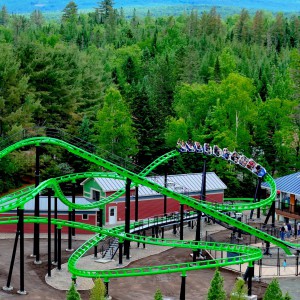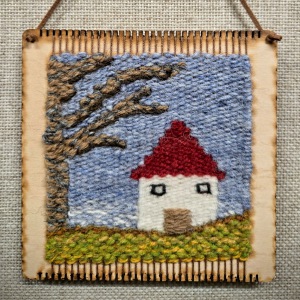Leaf peeping time
| Published: 10-10-2018 3:12 PM |
It’s autumn, a time when our attention is drawn to leaves because of the spectacular pallet which their changing colors create on the landscape. In addition to enjoying the various hues from afar, it’s worth taking a closer look at trees because even those that look similar have distinct features and life histories.
A great example is the American beech and the American chestnut (not to be confused with the horse-chestnut tree). These trees belong to the Fagaceae or beech family and have similar toothed leaves and burr-covered nuts.
The American beech is a dominant species in the northern hardwood forest, found throughout central New Hampshire. It can be identified by its smooth gray bark. Many tree species exhibit changing bark – becoming more furrowed, cracked or flakey with age, but if the beech is healthy, its bark remains as smooth after two or three hundred years as it was when it was a sapling. Indeed, these trees can live to be more than 300 years old, may reach a height of 50 to 80 feet tall and a diameter of more than three feet.
In addition to the bark, the beech has distinctive long pointy buds. When the buds open in spring, they grow into oval-shaped, coarsely toothed leaves, ranging from 2½ to 6 inches long and about 2½ inches wide. In autumn, beech leaves turn yellow and then tan and many will remain on the tree throughout the cold months. Curled, dry and brown, they rattle in the winter wind until new growth replaces them in spring.
The American chestnut may also keep some of its dead brown leaves after other species have dropped their leaves. Leaf retention is one way of locating chestnuts as you walk through the woods in late fall and winter. But don’t wait until then to look for them. At this time of year, find chestnuts by looking for beech-like leaves with deeply toothed edges that are much longer (4 to 8 inches) and more narrow than those on the beech leaves.
You won’t have to look very high up to see chestnut leaves because these trees max out at around 20 feet tall, no longer reaching the majestic stature (up to 130 feet tall) and girth (up to 10 feet in diameter) which they once achieved.
Around 1904 some Chinese chestnuts carrying a fungus were brought into New York City. The fungus invaded native chestnut trees and caused a blight which swept through the entire range of the American chestnut from Georgia to central New England. The American chestnut was wiped out as a viable species in less than 50 years. It’s hard to imagine today that prior to the blight, one out of every four trees in our local hardwood forest was a chestnut.
You might be wondering, if the blight killed all the chestnut trees, how can we still be finding them in the woods? The mature trees are gone, but the roots of the last productive trees remain beneath the soil. With great tenacity and determination, they send up sprouts which become rich brown twigs with blunt terminal buds – very different from the beech’s gray bark and pointy buds. The long narrow leaves unfurl and photosynthesize, making food for the tree and enabling new growth. The growth continues until the tree reaches 15 or 20 feet tall, with a trunk that may be 2 to 4 inches in diameter. Then, the blight attacks again, girdling and killing the young sapling, axing any chance of future grandeur.
Article continues after...
Yesterday's Most Read Articles
 As Canadian travel to the U.S. falls, North Country businesses are eyeing this Victoria Day weekend to predict impacts in New Hampshire
As Canadian travel to the U.S. falls, North Country businesses are eyeing this Victoria Day weekend to predict impacts in New Hampshire
 Study finds recyclables valued in millions of dollars tossed in New Hampshire’s waste stream
Study finds recyclables valued in millions of dollars tossed in New Hampshire’s waste stream
 “A dream come true” – Family opens housing for adults with disabilities in Concord
“A dream come true” – Family opens housing for adults with disabilities in Concord
 ‘Friends of the Beav’ want people to see the city’s golf course differently
‘Friends of the Beav’ want people to see the city’s golf course differently
 Helen Hanks resigns as Department of Corrections commissioner
Helen Hanks resigns as Department of Corrections commissioner
 ‘I thought we had some more time’ – Coping with the murder-suicide of a young Pembroke mother and son
‘I thought we had some more time’ – Coping with the murder-suicide of a young Pembroke mother and son
The loss of mature chestnut trees in our forest is truly unfortunate for many reasons. The lumber from these trees was highly prized for furniture, construction (many old barns are still supported by a more than 150 year old chestnut beam) and fence posts because the wood was so rot resistant. The nuts of the chestnuts were valuable for many species of wildlife, and people enjoyed them too.
Beechnuts are also eaten by wild turkeys, blue jays, bears, foxes, deer, squirrels and other rodents. Yet due to their smaller size, beechnuts don’t provide the same ratio of energy to effort that chestnuts once did.
Examining the similarities and differences between beech and chestnut can provide an important reminder of the value of each species and the importance of protecting diversity within our environment.
]]>







 Young Professional of the Month Katie Duncan shares about creativity, community, connection
Young Professional of the Month Katie Duncan shares about creativity, community, connection Tiny Tapestry sale at Red River Theaters raising money for Concord Coalition to End Homelessness
Tiny Tapestry sale at Red River Theaters raising money for Concord Coalition to End Homelessness Bowling for a cause: Angelman Syndrome Fundraiser coming to Boutwell’s
Bowling for a cause: Angelman Syndrome Fundraiser coming to Boutwell’s Beautify Allenstown hosting community cleanup day
Beautify Allenstown hosting community cleanup day
